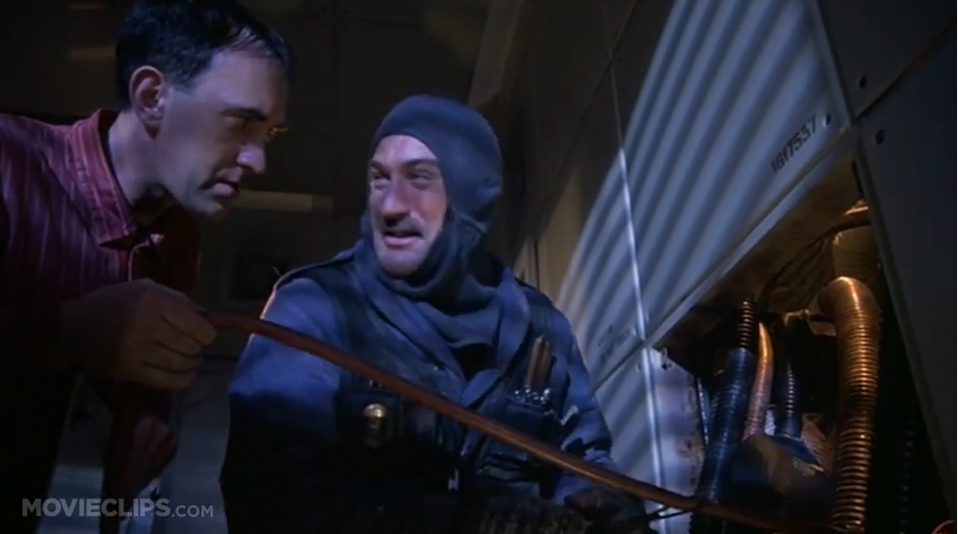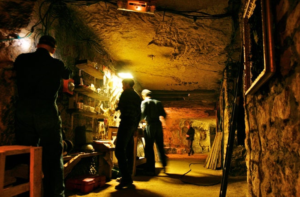 Terry Gilliam’s 1985 film Brazil mixed Orwellian dystopia with Monty Python dark comedic absurdity. Sadly, it now appears to have been keenly prescient.
Terry Gilliam’s 1985 film Brazil mixed Orwellian dystopia with Monty Python dark comedic absurdity. Sadly, it now appears to have been keenly prescient.
Robert de Niro’s character, Harry Tuttle, runs a guerrilla effort to fix people’s air conditioners due to the ineptitude of a bureaucracy known as Central Services. “This whole system of yours could be on fire and I couldn’t even turn on a kitchen tap without filling out a 27/B6,” Tuttle tells the protagonist as he makes illicit repairs. “Bloody paperwork!”
Central Services rewards Tuttle’s efforts to efficiently resolve people’s problems by attempting to execute him. Because of Central Service’s inefficiency, Tuttle survives, but police murder a citizen named Harry Buttle in his home due to a clerical error.
If only this were confined to film – but it is not.
Years later, and in the real world rather than on the silver screen, a group of Parisians known as UX, or Urban eXperiment, began using underground tunnels to break into museums to expertly restore and repair neglected works of art – a modern day Harry Tuttle scenario. UX set up workshops in the tunnels and always replaced the items they acquired, leaving them in better shape than they found them.
Wired featured the group’s efforts to restore the Pantheon’s 19th-century clock, which had not chimed since the 1960s.
 That September, Viot persuaded seven other UX members to join him in repairing the clock. They’d been contemplating the project for years, but now it seemed urgent: Oxidation had so crippled the works that they would soon become impossible to fix without re-creating, rather than restoring, almost every part.
That September, Viot persuaded seven other UX members to join him in repairing the clock. They’d been contemplating the project for years, but now it seemed urgent: Oxidation had so crippled the works that they would soon become impossible to fix without re-creating, rather than restoring, almost every part.
“That wouldn’t be a restored clock, but a facsimile,” Kunstmann says. As the project began, it took on an almost mystical significance for the team. Paris, as they saw it, was the center of France and was once the center of Western civilization; the Latin Quarter was Paris’ historic intellectual center; the Pantheon stands in the Latin Quarter and is dedicated to the great men of French history, many of whose remains are housed within; and in its interior lay a clock, beating like a heart, until it suddenly was silenced.
Untergunther wanted to restart the heart of the world.
Predictably, French authorities attempted to have UX arrested and sued them in court. No good deed goes unpunished in this wicked and absurdly bureaucratic world.
The K–12 system suffered from these sorts of problems even before the pandemic. Teachers were frustrated, and students suffered growing levels of anxiety and depression. A 44-year veteran of classroom teaching told a radio host two years ago that the problem with education was not money, which he said, “has always been tough.” The problem, he said, was that “the joy has been strangled out of the profession.”
So, who are the Harry Tuttle/UX types of education today?
We’ve featured several small school leaders on redefinED who certainly would qualify; see here, here and here. I recently saw on Facebook an advertisement for a wandering teacher from Austin who is coming to the Phoenix area in May to teach kids a five-hour class on Bronze Age sword casting where the kids get to cast their own sword.
Greg Wenderski, the Sword Casting Guy, is a tinkerer, metal artist, sword historian, and former science teacher. He has built catapults, crossbows, fighting robots, and child-sized tandem bicycles with his students. Once, when his students were studying the Greeks in Ancient Civilizations class, and were fascinated by metallurgy, he built a casting foundry and began casting Bronze Age style swords with them.
He expanded his sword casting classes to audiences of all ages in Austin and all around the U.S. He teaches two types of hands-on sword making classes that enable participants to explore themes of archaeology, metallurgy, and physics in the process of making a Bronze Age sword.
You can watch Wenderski describe his class here.
Wenderski is engaging in disintermediation at its finest. He provides what looks like an awesome service, and he receives payment in a voluntary exchange. No bureaucracy, lots of fun, and no form 27B/6.
In May, some of the kids experiencing this educational opportunity to learn a mixture of history, archeology and metallurgy will forge a sword and pay for it with their Empowerment Scholarship Account.
A large majority of Arizona’s Empowerment Scholarship account are children with disabilities, children in D/F rated schools and children living on Native American land. Providing them the chance to learn from Wenderski along with those using their own funds promotes a greater level of equity than would otherwise exist.
That is cutting out the middleman at its finest.